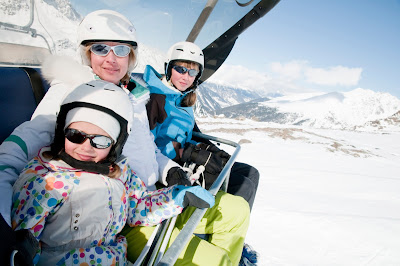It's no secret that winter and holiday travel can be the most stressful occasion. Especially when the hustle and bustle of holiday travel starts, people become more distressed with long waits and unexpected challenges. If you travel by air or car during the cold season, you can count on more delays than you'd experience in the summer. Once bad weather appears during the peak times for air travel, we end up with the lengthiest flight delays, cancellations and missed connections of the year.
On the other hand, road travel has its share of annoyances and risks. There may be road closings, slower speeds due to snow or sleet, traffic accidents and other obstacles to throw you off track. However, don't let the winter and holiday travel season make you blue. Become a smarter and happier traveler for your next winter vacations — use TravelSense's winter travel tips to make life easier as you journey to and from your destination.
Airline Travel Tips: Flying Doesn't Always Lead to Disaster:
Can you feel your teeth grinding as you imagine flying to your destination? If you're traveling a great distance over the holidays, the last thing you need is a stressful airport experience to start your vacation on the wrong foot. Consider some of the simplest airline travel tips that can alleviate your worries.
Plan ahead for your own sanity:
Waiting to the last minute always leaves a great deal of your trip up to happenstance. Of all of the top winter travel tips you may find, this is the one piece of advice that will be well worth spending the extra time and effort. Contact your travel agent to book your vacation in advance as soon as you can manage. Then, you'll be able to avoid peak travel dates, get lower airfare, fly direct (or minimize your connections) and fly early or late in the day to avoid the bigger crowds.
Leave at least an extra hour earlier:
As you prepare for your winter vacation, give yourself more time than usual in order to anticipate the peripheral delays that could occur. Remember to bring some reading material while you wait in the security line or at your departure gate. In cities with snow or ice, arrival delays can exceed two to three hours and de-icing procedures can take an hour before takeoff.
Pack as light as possible for your holiday travel:
Since more airlines are getting stricter on baggage limits and weight allowances, packing less and lighter suitcases could save you money and time. If you're planning holiday travel to be with your family and friends, consider shopping online and having your gifts shipped to your destination. This strategy will help cut down on luggage and minimize the risk of losing any special gifts.
Steer clear of influenza:
Winter travel can be a frequent contributor to the cold and flu time of year, adding a miserable element to your winter or holiday travel stress. Before you leave, visit your doctor's office to get the flu shot or nasal spray flu vaccine, which is only available for ages 5-49. Most germs will spread by contact, so wash your hands or use a hand sanitizer constantly.
Stretch your legs often:
If you find yourself in cramped quarters or passing time on long flights, there's the possibility you could develop Deep Vein Thrombosis (DVT), leading to blood clotting in your legs. So, remember this essential airline travel tip on your next flight — take some time to walk around and stretch your arms and legs once every hour.
Winter Driving Tips: Easier and Safer Winter Road Trips:
For road travelers, winter can also be the most dangerous time of year. Motor vehicle accidents involving bad weather, mostly ice and snow, claim the lives of 6,000 Americans and injure 500,000 more every year (National Center for Atmospheric Research, 2005). The following winter driving tips will help you stay safe and a little less anxious on your next trip.
Have your car examined before you leave:
This is one of the most crucial winter driving tips. It's the climatic scene of many movies, where someone's car breaks down in a strange town. The last thing you want to worry about is your car falling apart, leaving you stranded far away from home. Take it to your local auto shop for a quick once over, and make sure your tires are winter ready and properly inflated.
Be prepared for a change in course:
Before you depart, become confident in knowing your route. It's very important that you're ready for anything on the road that could slightly change your plans, including construction, road closings and traffic hurdles. Remember to keep the directions as well as appropriate state map(s) handy, in case you need to reroute your trip.
Stay hydrated for the journey:
It probably seems like dehydration isn't very likely, but a recent Mayo Clinic study shows that a mere one- to two-percent loss of body weight can quickly lead to fatigue and decreased alertness, which could be deadly in icy winter driving. Also, your body requires more fuel in the cold — so rely on high-energy food including sandwiches, a thermos filled with soup and fruit.
Pack a winter safety kit for the car:
Don't leave without the essentials for a safe road trip — a cell phone (don't forget the car charger); ice scraper; tow rope and jumper cables; sand or cat litter to aid with traction; blankets; flashlights, matches and emergency candles; first aid kit; portable radio; and a good book, in case you do get stuck.
Make frequent rest stops:
Winter driving is much more fatiguing than in the summer, so you'll want to make time to stop and stretch your legs. Just a few minutes off the road will make all the difference in improving your alertness when you're back behind the wheel.
Source :http://www.travelsense.org
















